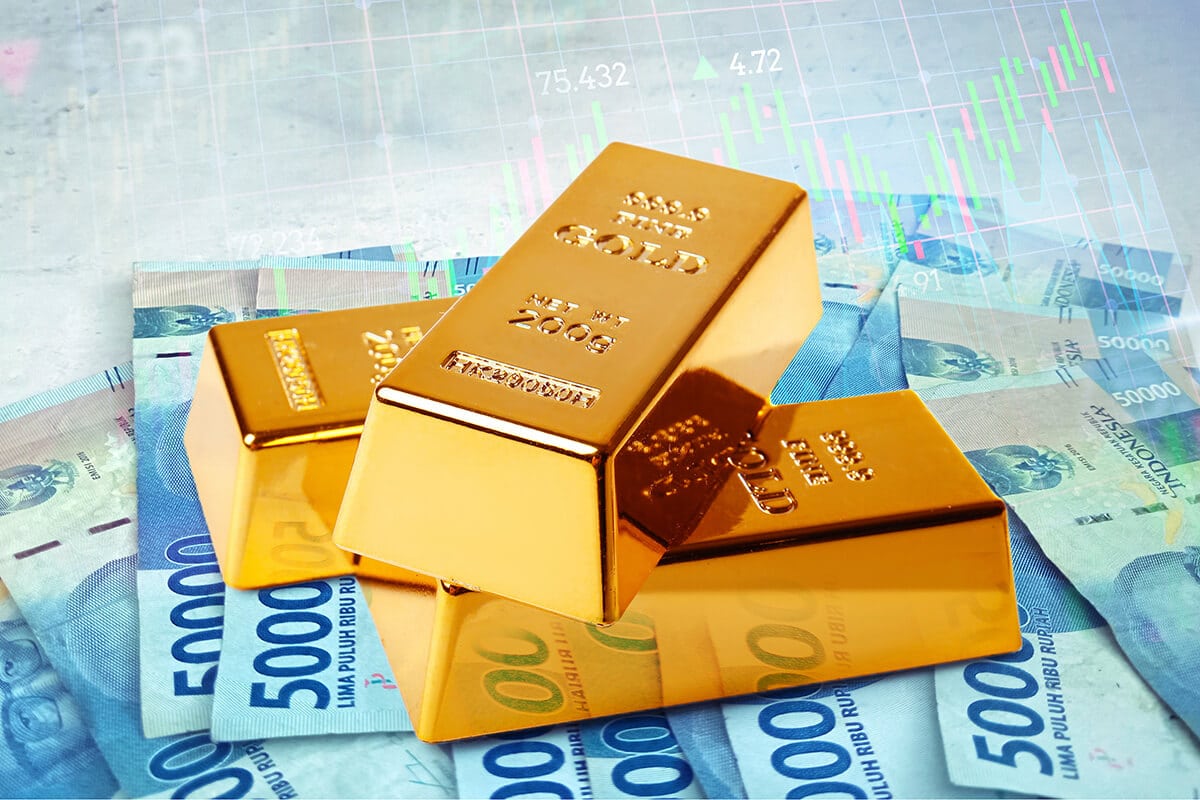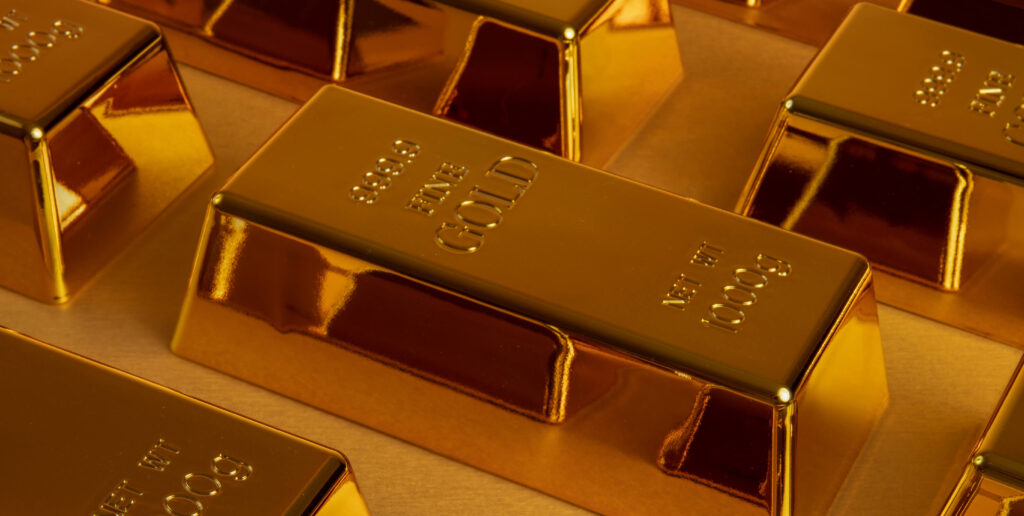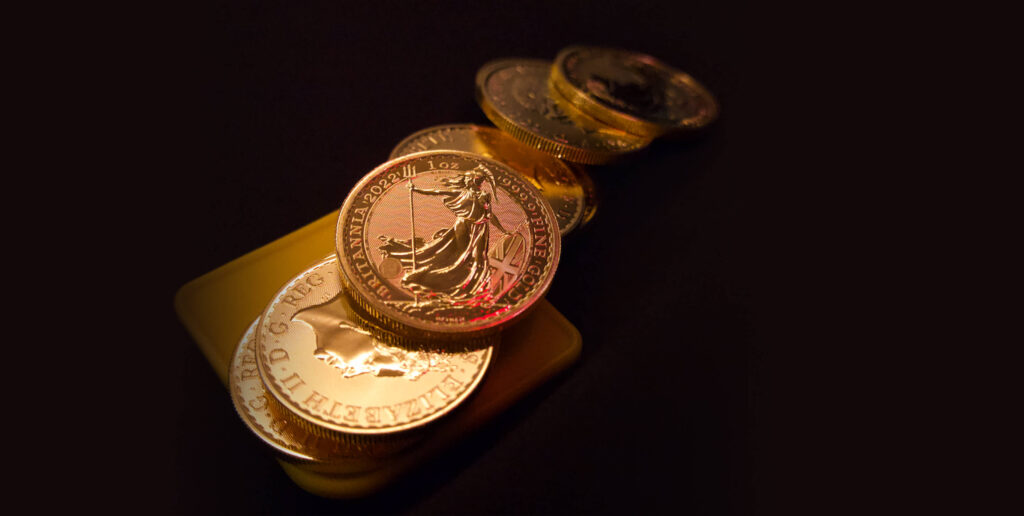Indonesia’s Gold Market
By SBMA

Gold Mining
Indonesia stands as Southeast Asia’s largest gold producer. While much of its gold is a by-product of copper mining, the nation saw substantial output in 2022, totalling 124 tonnes, marking an increase of 7% from the previous year. The Grasberg mine, a prominent source operated by FreeportMcMoRan (FCX) through its subsidiary PT Freeport Indonesia (PT-FI), is a significant contributor to this output. Currently, Freeport-McMoran retains a 29% stake in PT-FI, while the Indonesian government, through MIND ID Mining SOE Holding, is the majority shareholder with a 71% ownership stake. Additionally, the Batu Hijau mine in Sumbawa is managed by PT Amman Mineral Nusa Tenggara (AMNT), and the Martabe gold mine in North Sumatra is operated and wholly owned by PT Agincourt Resources (PTAR), both of which are key players in Indonesia’s mining sector.
Gold Refining

Gold Demand
Indonesia’s domestic gold demand is among the highest in the ASEAN region. According to Metals Focus, domestic gold demand from 2017 to 2022 was as follows: 2017: 58.7 tonnes, 2018: 64.0 tonnes, 2019: 54.5 tonnes, 2020: 37.3 tonnes, 2021: 46.8 tonnes and 2022: 49.8 tonnes. The nation’s gold is primarily imported from Japan, which accounts for 32% of the total, followed by Hong Kong at 21%, and both Australia and Singapore at 15% each, with Switzerland contributing 6%. Conversely, Indonesia’s gold exports are more significant to Singapore, receiving 62%, and Hong Kong at 24%, with Thailand (8%) and Switzerland (5%) also being notable destinations.
- Jewellery Consumption
The annual demand for Indonesia’s jewellery consumption from 2017 to 2022 was as follows – 2017: 38.56 tonnes, 2018: 41.89 tonnes, 2019: 40.38 tonnes, 2020: 20.90 tonnes, 2021: 27.00 tonnes and 2022: 28.26 tonnes. Historically favouring 24k and 22k gold, the Indonesian market now shows a pronounced tilt towards jewellery below 18k, which currently represents over half of the market. The Asosiasi Pengusaha Emas & Permata Indonesia (APEPI), known in English as the Indonesian Goldsmiths and Jewellers Association, plays a pivotal role in this sector, not only in representation but also in driving industry growth through events such as the Indonesia Jewellery Fair.
Recent regulatory developments include the establishment of the SNI, or Indonesian National Standard in 2021, which sets benchmarks for gold purity. The minimum carat required to be a gold product is 8k or 33.33%. While adherence to SNI is not yet compulsory, its inception indicates progressive steps towards comprehensive regulation. Furthermore, the government has introduced additional measures in 2022 to enhance the quality assurance of precious metals, involving sophisticated testing and certification methods. - Retail Investment
As for retail investment, which is the purchase of gold wafers and gold bars for investment purposes, annual demand from 2017 to 2022 was as follows – 2017: 20.20 tonnes, 2018: 22.16 tonnes, 2019: 14.20 tonnes, 2020: 16.80 tonnes, 2021: 19.80 tonnes and 2022: 21.5 tonnes. - Gold dinars and silver dirhams
Given the large muslim population, there is robust demand for traditional Islamic coins like Dinars and Dirhams. Since 2000, these coins have been minted by Logam Mulia and Islamic Mint Nusantara, following the establishment of Walkala Induk Nusantara (WIM).
IMN has also introduced Dinarfirst, a mobile/electronic payment system. It also organises market day festivals, where traders use dinars and dirhams for trade. The Indonesian dinars include the LM Dinar (Logam Mulia), Dinar Peruri (Perum Peruri) and IMN Dinar.
Gold Trading
- Online gold trading
Gold trading is widespread in Indonesia, and there is no restriction or price control over the buying and selling of gold, making it a dynamic market segment. Online gold trading is gaining traction among the younger generation of investors in Indonesia, and it is gaining popularity as an investment vehicle, complemented by a robust pawnbroking industry that often uses gold as collateral. - Commodities exchanges
Indonesia’s commodities market infrastructure includes two major exchanges based in Jakarta: the Jakarta Futures Exchange (JFX) and the Indonesia Commodity and Derivatives Exchange (ICDX), both offering gold futures contracts.
The JFX operates with a clearing house, PT Kliring Berjangka Indonesia (Persero), or PT KBI, and in English as the Indonesian Derivatives Clearing House (IDCH), which ICDX trades are settled and cleared via the Indonesia Clearing House (ICH). Commodity futures trading is regulated by the Commodity Futures Trading Act (COFTRA) and supervised by BAPPEBTI, the state futures trading regulatory agency. Both JFX and ICDX are members of the Association of Futures Markets.
JFX lists three contracts:
- Gold Futures Contract (GOLD): The Gold 250-gram futures (GOL250) and the Gold 100-gram futures (GOL100) have similar contract specifications to the kilo contract (GOL), the main differences being contract lot size. The 250-gram contract has a minimum delivery of four lots (i.e., 1 kg), while the 100-gram contract has a minimum delivery of 10 lots (i.e., 1 kg). Reportable positions and position limits also differ across the three contracts.
- Gold Periodic Rolling Contract: There are five contracts in this series. These are 1-month contracts, which, if open on the last business day of the month, automatically roll into the next month. Contract sizes are 100 grams, 50 grams, 25 grams, 10 grams and 5 grams. Regarding the grade, the gold bar has a purity of 99.99% with a stamp and serial number from ANTAM.
- “Rolling” daily gold contracts (cash-settled): These contracts are named Gold Rolling Contract (KGE), Dollar Denominated Gold Rolling Contract (KGE USD), Fixed Rate Dollar Denominated Rolling Gold Contract (KGE USD Fixed Rate) and Gold Index Rolling Contract (KIE). Gold Index is calculated by dividing KGE settlement prices in JFX with the Loco London physical market.
ICDX lists three contracts
- GOLDGR: Quoted in Indonesian rupiah (IDR), 100 grams contract size, 9999 fineness. Cash or physical settlement. For physical delivery, the seller submits a certificate of gold deposit to the ICDX clearing house. This contract, launched November 2009, has PT Antam Tbk and UBPP Logam Mulia as delivery points.
- GOLDUD: Quoted in US dollars, contract size 10 ounces, 9999 fine, cash-settled, settlement price based on loco London gold price. Launched April 2011.
- GOLDID: Quoted in US dollars, but with a fixed conversion rate of US$1 = 10,000 IDR. Cash-settled, contract size 10 ounces. Settlement price based on loco London gold price. Launched April 2011.
Exchange-traded gold contracts on Jakarta’s commodity exchanges have yet to become popular, with minimal daily trading volumes reflecting limited industry engagement. This situation is compounded by the absence of a dedicated gold exchange in Indonesia. Consequently, the pricing of gold within the country is often not transparent, with domestic prices frequently surpassing those on the international market.

Proposal to Set Up Local Bullion Banking in 2024
At the 2022 Asia Pacific Precious Metals Conference (APPMC) in June, the Indonesian government unveiled an initiative to set up a bullion bank by 2024, a strategic move developed in collaboration with stakeholders in the mining and financial sectors, including the central bank. Iskandar Simorangkir, deputy for macroeconomics and finance policy coordination at the Coordinating Ministry for Economic Affairs, highlighted the potential for this bank to reduce the country’s need to import gold products after being certified overseas, thus fostering the local market and offering new financing avenues. Furthermore, this institution is expected to utilise gold-based financial instruments to manage stability. In the subsequent year, at the 2023 conference, it was announced that PT Pegadaian has been selected to begin piloting bullion services, introducing products such as dore financing, unallocated account, and gold metal loans, marking the first phase of this ambitious project.
Conclusion
Indonesia’s comprehensive gold market spans mining, refining, jewellery manufacturing, and retailing, offering a competitive landscape especially valued by locals, who see gold as a form of savings, rather than investment. However, the lack of infrastructure and tax regulations have led to market distortions, with illegal flows and off-market transactions. The government’s plans to streamline the market by allowing bullion banking and the relaxation of tax regime herald potential market improvements, fostering growth and stimulating further development of the industry, particularly in jewellery manufacturing, in both domestic and export markets. Additionally, this strategy promises a boost for the retail sector through reliable raw material sources, a simplified regulatory environment, and a more organised industry structure.
The country’s robust gold supply, including 125 tonnes from mining and recycling, matched with a demand of about 49.8 tonnes in 2022, suggests a market ripe for engagement. This is further enriched by initiatives like the Shari’ah Standard on Gold, the introduction of dinar coins, and the ASEAN free-trade agreement with India, combined with increasing regulatory support, making the Indonesian gold market increasingly attractive for participants.
Appendix
- Central Bank – http://www.bi.go.id/en/Default.aspx
- Ministry of Trade – https://www.kemendag.go.id/
- Indonesian Customs and Excise – http://www.beacukai.go.id
Economic Data (2022)
Population: 276 million
GDP growth: 5.3%
GDP/P: US$4,788
Inflation: 4.2%
Exports: US$323.08 billion
Imports: US$275.70 billion
Total reserves (including gold): US$137.22 billion
External debt stocks (2021): US$416.47 billion
Source: World Bank




























